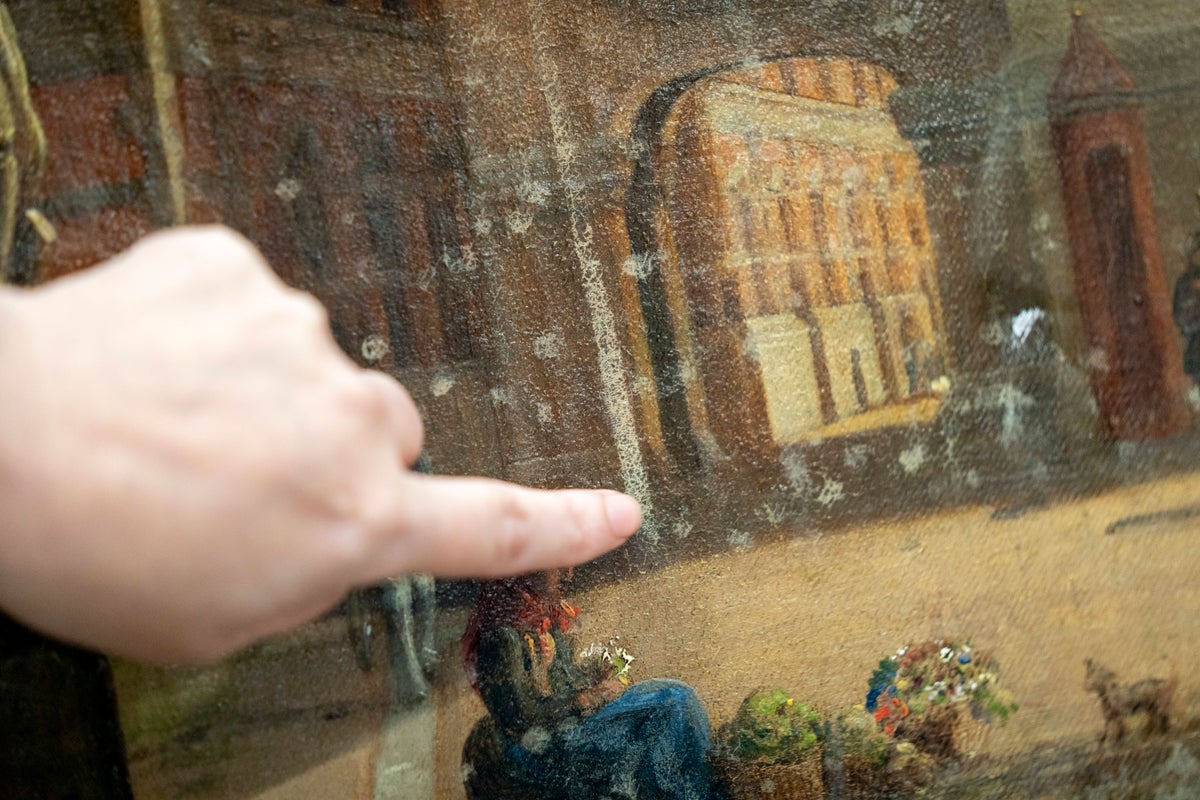
As fire tore through downtown Copenhagen’s Old Stock Exchange in mid-April, many people in the Danish capital rushed toward the flames and emerged carrying paintings, sculptures, and other important items from Denmark’s cultural heritage.
Seven weeks on and with about half the 17th-century building destroyed — including its iconic dragon-tail spire — Denmark's Culture Minister Jakob Engel-Schmidt said that more than 90% of the building's cultural objects had been rescued from the fire.
“People from the fire brigade, employees, and volunteers just coming out of the streets were helping to save the artworks,” Engel-Schmidt told The Associated Press in an interview. “More than 350 artifacts and paintings were saved from the fire."
Engel-Schmidt said some items couldn’t be saved, including a sculpture too heavy for rescuers to lift, and artworks painted directly on the building’s walls. The sculpture was a copy of work by Danish neo-classicist artist Bertel Thovaldsen of King Christian IV who died in 1648. The monarch is credited for having had the Old Stock Exchange built.
The saved objects are now stored in a modern, air-conditioned National Museum warehouse in Vinge near Frederikssund, about 35 kilometers (22 miles), northwest of Copenhagen. The facility is surrounded by fences, moats, and thick concrete walls.
“Some of the 170 paintings are being restored right now,” Engel-Schmidt said. “Others are in a very good quality and will be on loan to different museums in the months to come so the public and the Danish people can enjoy them again.”
As fire tore through the over-400-year-old building, even Brian Mikkelsen, the CEO of Denmark’s Chamber of Commerce, which owns the building, ventured in to rescue artworks.
Thanks to a carefully created “heritage plan” that deemed the most important paintings and sculptures, Mikkelsen knew exactly what to prioritize: a huge painting titled “From Copenhagen Stock Exchange” by Danish artist P.S. Krøyer.
Completed in 1895, it depicts around 50 men in top hats gathered in the stock exchange’s Great Hall and measures 254 centimeters (100 inches) times 409 centimeters (161 inches), making it one of his largest canvases.
“That one was number one,” Mikkelsen said of the painting, which he called a national icon by one of the country's most famous painters. He said it "symbolizes the rise of Danish industry, society, welfare society and business society.”
The cause of the April 16 fire is still under investigation, but it is believed to have started on the roof while it was wrapped in scaffolding because of continuing renovations. Two days later, a large section of the building’s outer wall collapsed inwards.
Mikkelsen has vowed repeatedly to rebuild the 1615 building, considered a leading example of Dutch Renaissance style in Denmark. Such a project could take five years or more. Mikkelsen said the financing was in order but did not say how much money had been raised.
While rescued, many paintings did not emerge from the fire unscathed, said Nina Wajnman, a paintings conservator with Denmark's National Museum. She said several suffered water damage from firefighters’ hoses.
“There wasn’t any real fire damage. There wasn’t real heat damage or any soot damage in a very big extent,” she said. “Most of it was water damage, and the first paintings that were saved were not damaged at all.”
Wajnman was among the many people who rushed to the stock exchange when she heard news of the fire, and spent the day assessing rescued paintings together with National Museum colleagues.
The fire in Copenhagen was reminiscent of an April 2019 blaze at Notre Dame in Paris. The 800-year-old cathedral also lost its spire. Its partial restoration is slated for completion this year.
——
Jan M. Olsen in Copenhagen contributed to this report.







